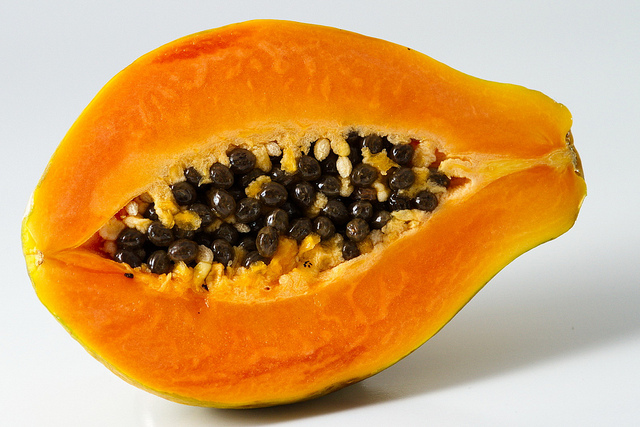
Early Abortion: A Papaya Workshop
I think about abortion a lot- who gets them, how they’re accessed, who performs them, what getting one might be like, and about the negative messages that we’re given, both explicitly and subtly, and that we absorb about abortion, otherwise known as abortion stigma. (look up the tweets for this) I am someone who believes in abortion “on demand and without apology,” and still, because I’m a person alive in the world, abortion stigma lives inside me. Seeing how an abortion happens, even if it happens on fruit that tastes like the smell of a hair salon, is important for breaking down that stigma.
The papaya, if you weren’t aware-I was not- is a realistic model for the uterus. It resembles it during early pregnancy in size, shape and consistency, and so it’s often used as a tool in medical training for MVAs. MVAs are one type of early abortion, the other being medication abortion, which is done via pill, and can be performed up to 12 weeks into the pregnancy.
The provider who walked us through the procedure asked that her name not be used for safety reasons. “You have to be mindful of the power you have as a clinician,” the provider told us. “It’s important not to ever go in with judgment. Don’t make it something if they’re not feeling it or take it somewhere they don’t want it to go. I try not to impose the feeling. I say, “Here’s a tissue”, instead of “Are you sad?” (The stigma is that everyone who has an abortion is sad, when in actuality, there are a range of emotions about the procedure, because, you know, people are complicated.)
In simulating the procedure, the papaya’s opening is dilated, and the seeds are removed with the manual vacuum aspirator. If you’re a person, and not a piece of fruit, you can be awake, with local anesthesia, during an MVA, or you can be completely unconscious. The entire procedure takes between 5 and 10 minutes. The bleeding that happens afterwards depends on how far along you are in the pregnancy. In both a medication abortion and an MVA, a follow up visit to the doctor is required. Depending on how far away you live from the clinic, whether or not you can obtain childcare, a bus ticket, or a day off from work, you may or may not actually be able to return to the doctor.
I have not had an abortion, but I have thought about the decision. Cis gendered women, transpeople, folks who can make a baby have thought about these things. (The stigma, of course, is that abortion is something you decide on a whim, which is why, in some states, clinician are required to ask the patient, “Are you sure you want to do this?”)
The sight of the papaya seeds being aspirated was surprising. There was a thing inside a thing, and now it’s not there anymore. It’s important to see that, to understand what is there. “It’s hard to do abortions,” said the provider. “I do it because it’s the moral thing to do, it helps me sleep at night…People wake up from their abortions and say, “Oh my Gd, you just gave me my life back.”
Traveller_40 via photopin cc



